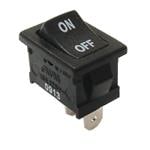Simplified healing: user-friendly treatments for venous leg ulcer management
Within the UK, it has been reported that as of April 2024, more than 2.83 million people are not working due to long-term sickness. Among those figures, venous leg ulcers affect 0.3% to 3% of the global population.
This article originally appeared in the January'25 magazine issue of Electronic Specifier Design – see ES's Magazine Archives for more featured publications.
By Bernard Ross, CEO and Founder, Sky Medical Technology
Venous leg ulcers (VLU) are a growing public health challenge, and many community nurses manage a significant influx of patients in need of consistent wound care.
With the NHS under constant pressure and demand only expected to increase, user-friendly treatments can be a key tool for healthcare providers and save healthcare costs in 2025.
To overcome this, practitioners and patients are turning to innovative solutions such as wearable medical technology to speed up recovery and enable patients to become more independent in their care.
The importance of shared care and its impact on wellbeing
A common complication of VLUs is the risk of infection, which can be due to factors such as poor nutrition, reduced blood flow, and age. Additionally, patients are also subjected to painful sores on the skin, aching or swelling in the legs and discolouration surrounding the wound.
Alongside the physical toil of wound care, it can also escalate to affect a patient's wellbeing and mental health. Living with chronic wounds can be debilitating for patients, causing isolation, uncertainty, and worsening mental health, leading to depression and anxiety.
To overcome this, patient self-management and the concept of shared care are becoming a crucial part of wound care and recovery. Patients who can adapt and take a more active role in their recovery can highly benefit from technology solutions which are developed to simplify the healing process and promote self-care.
Due to VLU often reducing blood flow in the legs, some wearable MedTech devices utilise Neuromuscular Electrical stimulation (NMES) technology. NMES is the use of electrical impulses to draw muscle contraction. For VLU, it stimulates the common peroneal nerve, activating the calf and foot muscle pumps, resulting in increased blood flow to the deep veins of the calf. Alongside compression therapy, the increased blood flow generated by NMES can help prevent and treat VLU, improve patient outcomes, reduce the need for ongoing treatment and lessen the strain on community nurses.
Incorporating MedTech as well as a shared care model can not only create less disruption day to day but result in fewer home visits needed to treat the wound. Furthermore, it has also been shown to significantly improve depression management and encourage an overall healthier lifestyle.
The effectiveness of MedTech
One of the ongoing issues in treating VLUs is keeping up with the increased number of patients who require ongoing treatment. Recent statistics have revealed that in February 2024, theNHS waiting list surpassed 7.5 million, with a significant number of patients needing hospital care due to unhealed or infected wounds.
Therefore, the need for alternative solutions in managing patient outcare is becoming a crucial element of treating VLUs. Often patients eligible for MedTech assistance are provided with a wearable device that can be worn on multiple areas of the body to help treat, track, or monitor conditions. This minimises the impact of health care on the daily routine of patients and takes pressure off healthcare providers.
From a practitioner's perspective, introducing wearable devices to patients could become a key element in overcoming barriers when reporting and retrieving data for remote monitoring. Having better visibility over a patient's recovery enables healthcare providers to have a clear understanding of the long-term benefits wearable devices can provide to outpatient care.
Future of user-friendly treatments
To improve patient outcomes and work towards reducing the strain on healthcare providers, MedTech needs to be at the forefront of user-friendly treatments. Investing in more efficient ways to handle wound care can enable patients to take more control over their care with less resources needed from nurses and healthcare practitioners.
As a result, this can drastically reduce costs and highly benefit patients with fasting healing times and fewer complications physically and mentally. With waiting times only continuing to increase, deploying MedTech solutions to patients can offer an alternative way of treating complex conditions such as VLUs to simplify the healing process in the comfort of their own homes.







